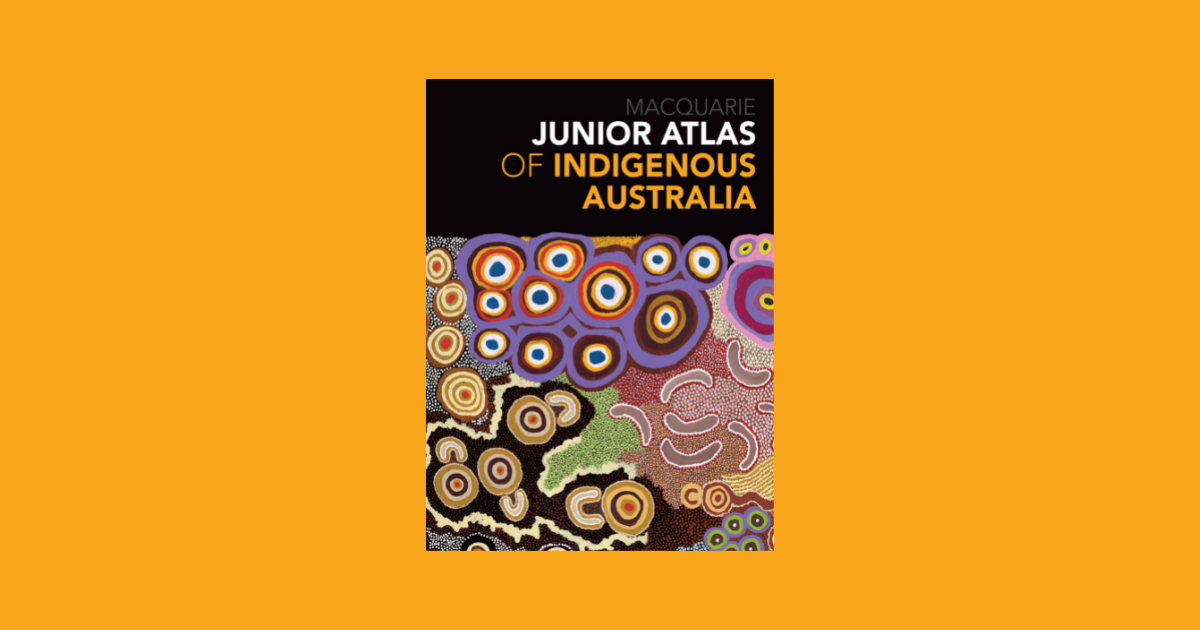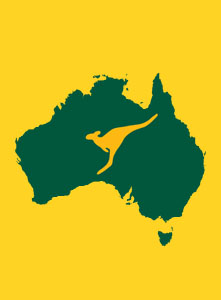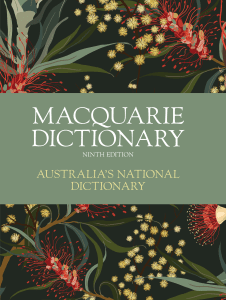After a comprehensive, independent examination of the Junior Atlas of Indigenous Australia the book has been reintroduced for sale after it had been temporarily withdrawn.
On 15 February Pan Macmillan Publishers put a temporary hold on further supply of the Junior Atlas of Indigenous Australia in light of concerns raised by some members of the public. A comprehensive, independent examination of the book has since been undertaken by Professor Marcia Langton and Professor Aaron Corn of the University of Melbourne. They engaged numerous expert consultants in the process, both Indigenous and non-Indigenous. All strongly endorsed the publication of the Junior Atlas of Indigenous Australia and saw no reasonable justification for its withdrawal from sale.
Review of the Junior Atlas of Indigenous Australia
Professor Dr Marcia Langton AO, BA (Hons), ANU, PhD Macq. U, D. Litt. ANU, FASSA
Associate Provost | Redmond Barry Distinguished Professor | Foundation Chair of Australian Indigenous Studies
Indigenous Studies Unit | Centre for Health Equity
Melbourne School of Population and Global Health
The University of Melbourne
Professor Aaron Corn, PhD
Inaugural Director, Indigenous Knowledge Institute
The University of Melbourne
As the Introduction explains clearly, this Atlas consists of many maps, images, graphs, and charts with captions as expected. It is intended for a younger audience of primary and early secondary students.
The General Editors from ANU and Macquarie Dictionary are experts, as are the more than 40 authors. Jasmine Seymour, a Dharug primary school teacher and author of several children’s books, was the Cultural Advisor to the General Editors and it is obvious that she has provided sound and appropriate educational and cultural advice. She also provided exemplary Teachers’ Notes in conjunction with Macquarie Dictionary. We would ourselves have taken this approach, which has resulted in an exceptional outcome.
This is an ideal resource for many primary school subject areas and levels. It is also an excellent general text that I would recommend to any parents of younger children to have at home. The 26 chapter topics are carefully considered, comprehensive and provide accurate rigorous summaries of the essential information that every child should know about the histories and cultures of Indigenous Australians, as well as Australia’s geography, physical and social.
We found nothing in the book that was offensive, inappropriate, or racist. We found no errors of fact and it is clear that the sources of the information presented are the accepted and rigorous ones.
Many key events in our history are summarised and illustrated, and many of the entries and illustrations, such as the Indigenous runners in the 2017 NYC Marathon, are surprising and welcome, because of their very positive messages for young Australians. The illustrations are cleverly selected. For example, Charles Perkins with children at the Moree town swimming pool (1965), the Black Lives Matter protest at Australian Parliament House in Canberra (2020), and the Aboriginal Tent Embassy (1972) are just some of those selected to offer a comprehensive coverage of the Aboriginal and Torres Strait Islander movement throughout Australia.
The enormous diversity of Australian Indigenous languages and cultures is very well represented. The status of these languages is expertly addressed. The decision not to refer primary school children to online language resources such as AustLang and the Gambay map was appropriate as it would create difficulties for both those readers and their teachers. Those resources are usually used by Indigenous language speakers and experts with a sound training in linguistics.
It is greatly refreshing to see such a comprehensive consideration of what are usually considered contentious political matters. These, of course, are Australia’s political history.
From a population health perspective, we were delighted to see accurate information about alcohol and substance use in the Health and Wellbeing chapter. These topics are usually suppressed but are important points that must be openly discussed in our efforts to improve health and quality of life outcomes.
The outstanding feature of the Atlas’s rigorous methodology is the deep collaboration between Indigenous and other experts, as well as Indigenous cultural practitioners. Among the 40 authors, are 10 Indigenous scholars. In addition, there are contributing Indigenous cultural practitioners, as well as other experts from various disciplines, whose work one would expect to see in a book of this kind.
The Teachers’ Notes for this book are an especially important contribution and a highly commendable resource. Jasmine Seymour has done tremendous work, covering a huge breadth of topics. Any teacher could find something to use across a wide range of topic areas. The inquiry questions for each chapter blend standard topic knowledge together with questions about Indigenous histories and cultures seamlessly. They range from simple fact-finding to critical thinking about issues and situations. Engagement with local Elders is continuously encouraged throughout, together with activities that are designed to help children learn about their own specific local area, such as finding suitable plants for weaving in their locality. There is astute and rigorous use of scientific thinking and knowledge embedded throughout. More contentious and difficult topics, such as the Stolen Generations, citizenship (or lack thereof), Australia Day, and substance and alcohol abuse, are presented in an objective way that encourages students to draw conclusions by examining facts and evidence.
Overall, these Notes offer a framework in which students will learn important information about Australia in tandem in the context of significant associated information about the Indigenous peoples of Australia. The Notes also provide a framework for learning about Australia’s deep history.
The material is very well targeted at the age groups specified and treats Indigenous histories and cultures with the same level of respect and value as other material. Importantly, it does not infantilise Indigenous people and their cultures.
Published criticisms of this excellent book bear the hallmarks of a style of racism that is extraordinarily difficult to counter, because so few people have the intellectual training to understand the difference between evidence-based accounts of Indigenous Australia and popular mythologies that misrepresent the facts. These criticisms are entirely unreasonable.
The proposition that any of this book’s content or its contributors are racist, because they might make people feel uncomfortable, is an increasingly popular strategy employed to silence expert views on politicised ideological grounds. When the material being attacked is of an expert disciplinary nature, we have responsibilities as publishers, editors and authors to reject such critiques and ensure that our experts are able to retain freedom of academic expression.
The unconscionable damage to the reputations of the editors and authors in this book is a matter of great concern. They are owed an apology for these uninformed attacks on their integrity. Publishers should beware of such campaigns to silence our experts, disciplinary and cultural, and take their responsibilities to them seriously. Publishers should seek expert comment in future, rather than acquiescing to opportunistic attacks of this kind. We consulted numerous independent colleagues about the Atlas in response to the published attacks against it, all of whom were dismayed that people whose work we respect and use have been so poorly treated. The general consensus however was that all colleagues with whom we spoke, irrespective of background, felt powerless to speak out against such unfounded critiques.
There can be no reasonable justification for withdrawing this book from the market. It has taken many years to reach the levels of Indigenous higher education and scholarly research training required for a book of this nature to be collaboratively produced at the high standard this Atlas achieves. That this is now possible is a cause for celebration and an approach that all publishers should seek to emulate.
There are certainly reasons why books that do not meet rigorous scholarly and production standards should be withdrawn from sale. There are notable cases where works of fiction based on poor or sham research, for example, have been presented as factual accounts. The fine work presented in this Atlas, however, is not in this category. We therefore endorse this book, as we would any publication produced to this high standard.
_______________________________________________
This review was conducted independently, without compensation from the Publisher. The authors were not involved in any part of the development and publication of the Junior Atlas of Indigenous Australia.




